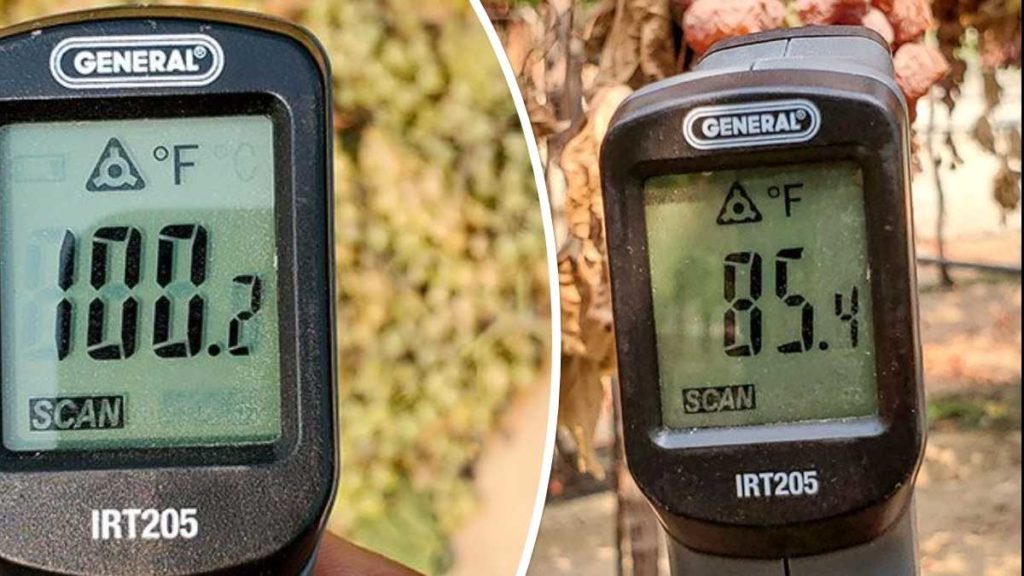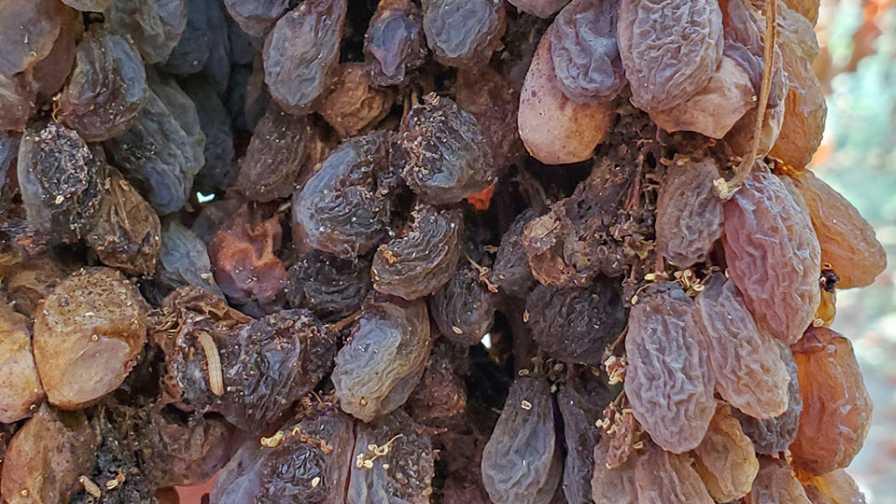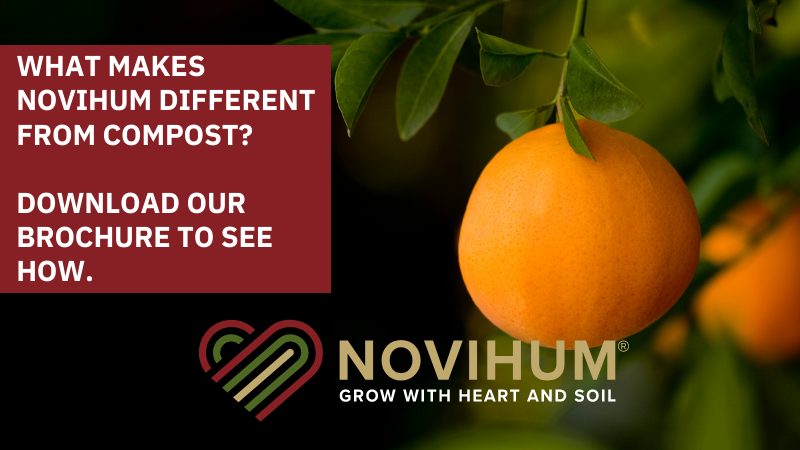The Impact of Wildfire Smoke on California Raisins

Temperature of raisin grapes drying on trays (left) and on the vine (right) near Fresno, CA. Ambient temperature was about 92°F at the time temperature measurements were made. Relatively low temperatures were due to lack of sunlight caused by wildfire smoke.
Photos by Stephen Vasquez, SUN-MAID
The ongoing international COVID-19 pandemic has disrupted everyone’s life and work, and when most people think of 2020, the pandemic will be top-of-mind. However, when many Californians, including some grape growers, think of 2020, wildfires will also come to mind.
Since the beginning of the year, wildfires have burned more than 4 million acres in California, impacting much of the state. According to Cal Fire, five of the top 20 most destructive California wildfires occurred in 2020. Some of the worst fires were in coastal wine grape-growing regions. The location, scale, and timing of the fires caused unprecedented exposure of grapes to smoke, leading to widespread concern about smoke-tainted wine.
Colleagues in my home department, Viticulture and Enology at University of California, Davis, are actively engaged in helping growers and wineries assess smoke taint in vineyards affected by wildfires. A web page with more information on these efforts is available at Wineserver.ucdavis.edu/Industry-Info/Viticulture-Resources/Wildfire-Impact-ca-Grapes.
Wine grapes were more affected by wildfires than other grape commodities, but, unexpectedly, wildfires also negatively affected raisin grapes in the San Joaquin Valley. Specifically, smoke from the fires reduced solar radiation and lowered temperatures during September, when most of California’s raisins are drying in vineyards.
California specializes in “natural” raisins, which are dried in a vineyard without chemical pretreatments to hasten drying. Most raisin grapes in California are dried on paper trays laid on the ground between vine rows, but many are also dried on the vine (DOV). Regardless, the drying rate mainly depends on vapor pressure deficit (VPD), which is essentially the capacity of air to absorb moisture and berry temperature. Vapor pressure deficit is greatest when temperatures are high and relative humidity is low. Air circulation also contributes to low relative humidity and increased VPD. Of these factors, berry temperature has the strongest influence on the drying rate of sun-dried raisins, and sunlight exposure is directly related to berry temperature.
Direct sunlight increases the berry temperature of drying grapes, whether on trays or on the vine. The temperature of berries on trays is further increased by radiant sunlight and heat accumulation of the soil. And higher drying temperature is why grapes on trays dry faster than grapes on the vine.
Grapes on the vine also benefit from increased exposure to light and better air circulation. And canopy management practices that increase exposure of DOV raisins can hasten drying. The temperature of sun-exposed berries on trays can easily exceed 130°F, and temperatures greater than 150°F have been recorded. However, when smoke from various wildfires periodically infiltrated raisin-growing regions in the San Joaquin Valley, reducing solar radiation, berry temperatures were barely above ambient.

Insects and fungi infest a cluster of raisin grapes, drying on the vine near Fresno, California, in September, 2020. Wildfire smoke impaired drying, making clusters of grapes more susceptible than they normally would be to infestations.
Photo by Stephen Vasquez, SUN-MAID
Grapes drying on trays are highly susceptible to adverse weather, especially rain. The risk of rain increases sharply as drying time is extended. Fortunately, as of mid-October, the time this is being written, no rain has occurred in this region. However, an extended drying time also increases the time that drying grapes are vulnerable to various rots and decays, and infestation by insects such as fruit flies, raisin moth, and dried fruit beetle.
Hopefully in 2021, the pandemic will ease and there will be fewer wildfires. Regardless, weather is unpredictable, and timely drying is always desirable. A season-long approach that adequately controls diseases and pests provides adequate, but not excessive, water and nutrition, and avoids overcropping, will help ensure timely ripening, which is the critical first step toward achieving good raisin yield and quality and timely drying. Tray filling affects drying rates, with lighter trays drying faster than heavier ones. Position in the row can also affect tray drying, with the slowest drying near the end of a row.










